Spooky plants – 12 varieties that will thrill and scare for Halloween and beyond
Get set for Halloween with the creepiest plant decor for home and yard
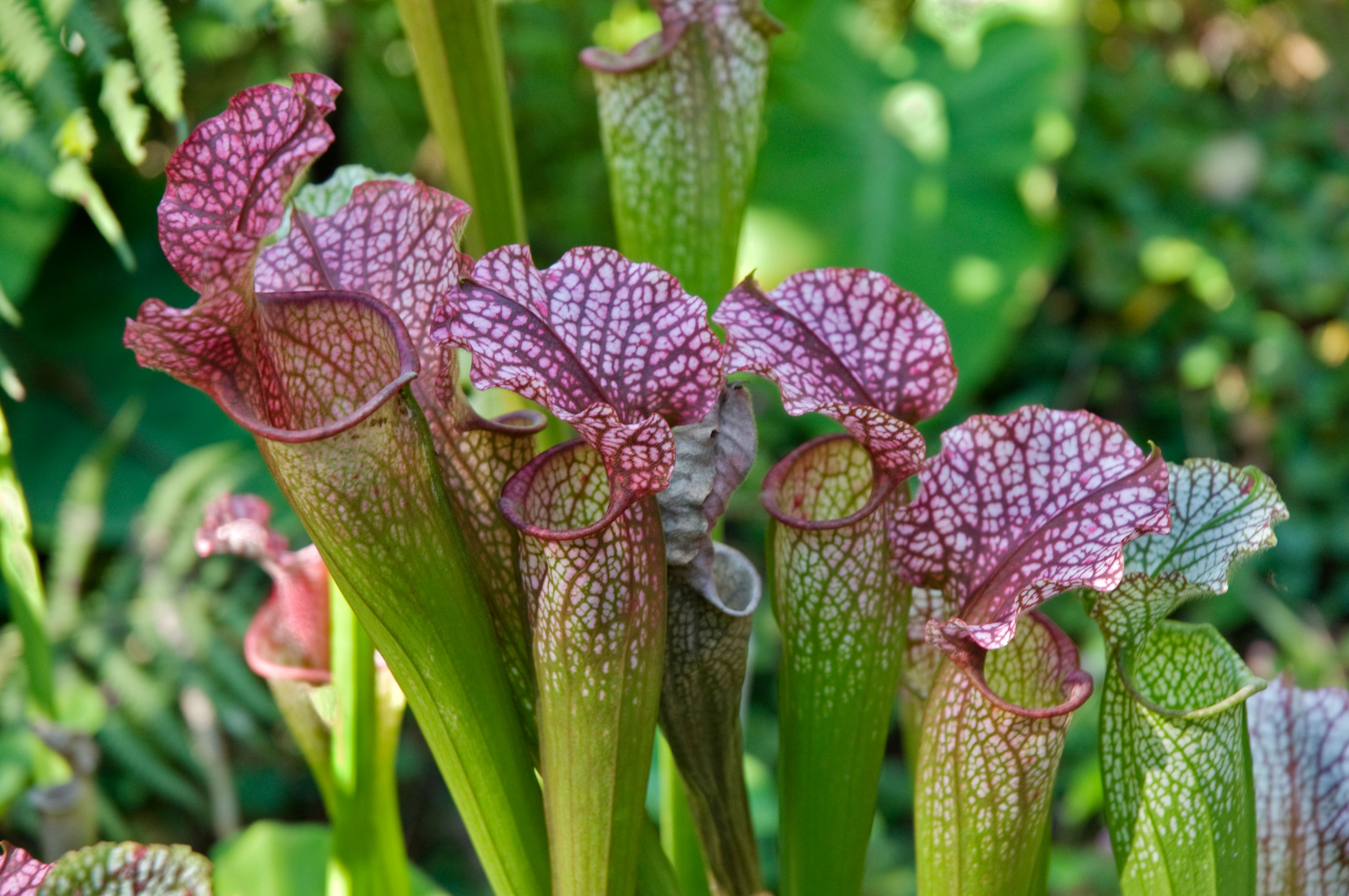

Showcasing spooky plants - indoors and out - is an innovative way to get your home set for Halloween. From carnivorous pitchers, sticky sundew to cobwebbed houseleeks, they can all help strike a macabre and ghostly mood. Plus, they give us a chance to marvel at some of nature’s most weird and wonderful creations, if you are brave enough.
Conjure up a spellbinding display along shelves and windowsills, or indulge in some seriously spooky tablescaping, with an array of spiny cacti and fleshy succulents. If you fancy a more traditional look, try teaming pumpkins, squash and gourds with lush black foliage and flowering plants such as 'Black Forest' coral bells heuchera, available from American Meadows, mondo grass and oxalis. Deep purple blooms such as the mesmerising 'bat flower' and moody calla lily ‘Black Star' from Burpee will also turn heads , adding a creepy touch to any porch or entrance.
Feeling bold enough to delve into the world of spooky, freaky plants? We’ve gathered 12 of the best spooky plants to elevate your Halloween decoration ideas.
Black Bat Flower
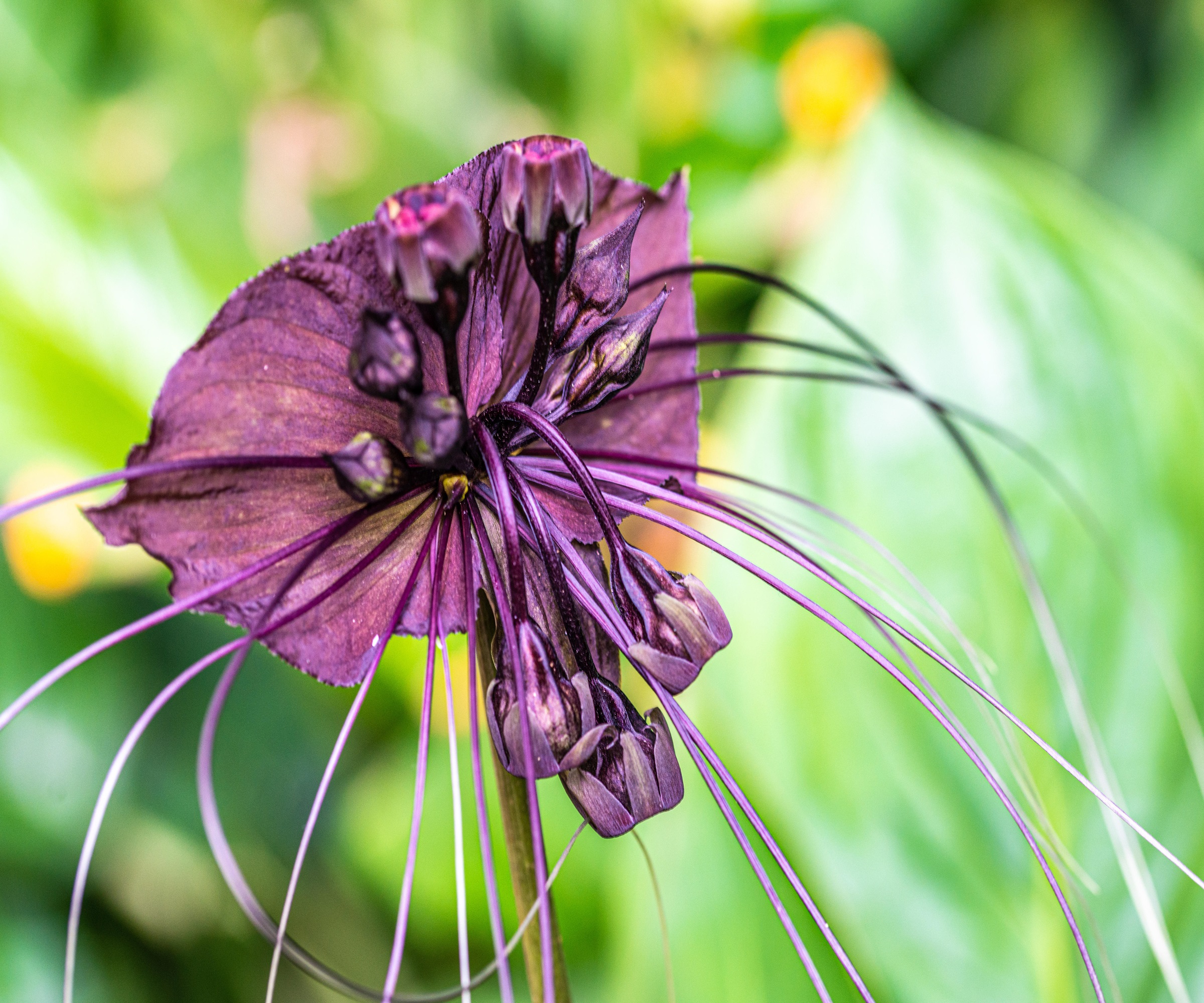
A fascinating bloom, Tacca chantrieri or bat flower has black, bat-shaped petals with brown or black bracts and long whiskers or bracteoles. Bizarre but beautiful, it comes in a range of enigmatic, dusky colors but the black variety is so apt for Halloween. The leafless stems grow to around 25 inches (65cm) tall, emerging from low, curving glossy green leaves.
This perennial is native to the semi-tropical forests of Asia and Australia, so it’s no surprise that it is relatively tricky to grow. They can be grown in USDA zones 9b to 11, prefer a part sunny, part shady spot in well drained but moist soil. Bat flowers thrive in a warm, steady temperature of 70 to 80 degrees F (21-26C). Avoid letting conditions dip below 55F (12C) as the plant will perish.
Ghost plant
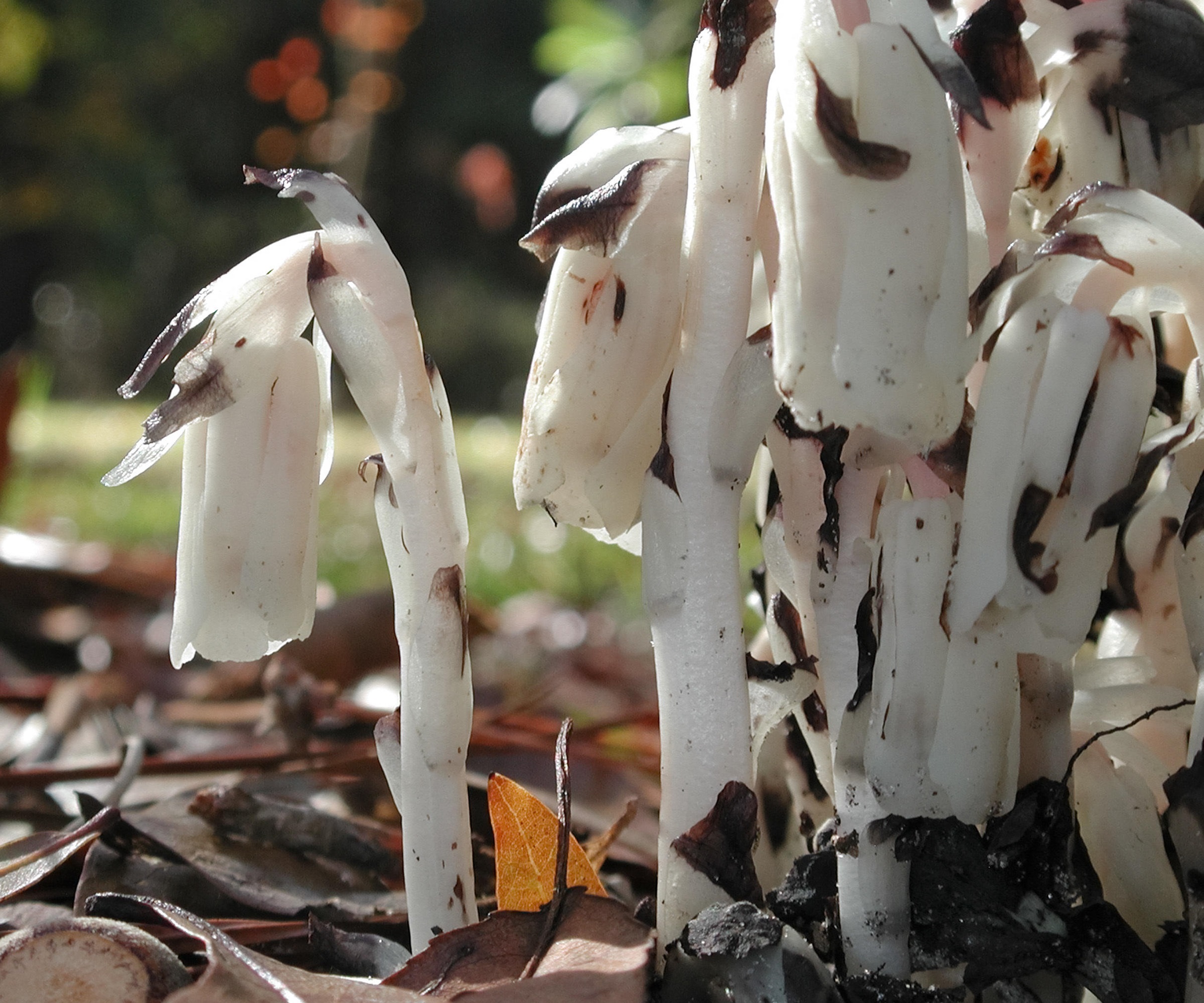
Also known as the American Ice Plant and Indian Pipe, this unusual plant bears a single drooping, bell-like flower on top of a fleshy, upright stem. The flowerhead slowly becomes upright as the seed ripens adding to the plant’s mystical nature.
‘Ghost Plants are some of the most interested plants and the spookiness is in the name,’ says plant expert Katie Sunderlage. ‘White in color, almost translucent, they have a unique shape that is similar to outstretched, bent fingers making this the perfect addition to a spooky garden in warm climates.’
Monotropa uniflora is hardy in zones 8-11 and does best in full to part sun, in more moist soil.
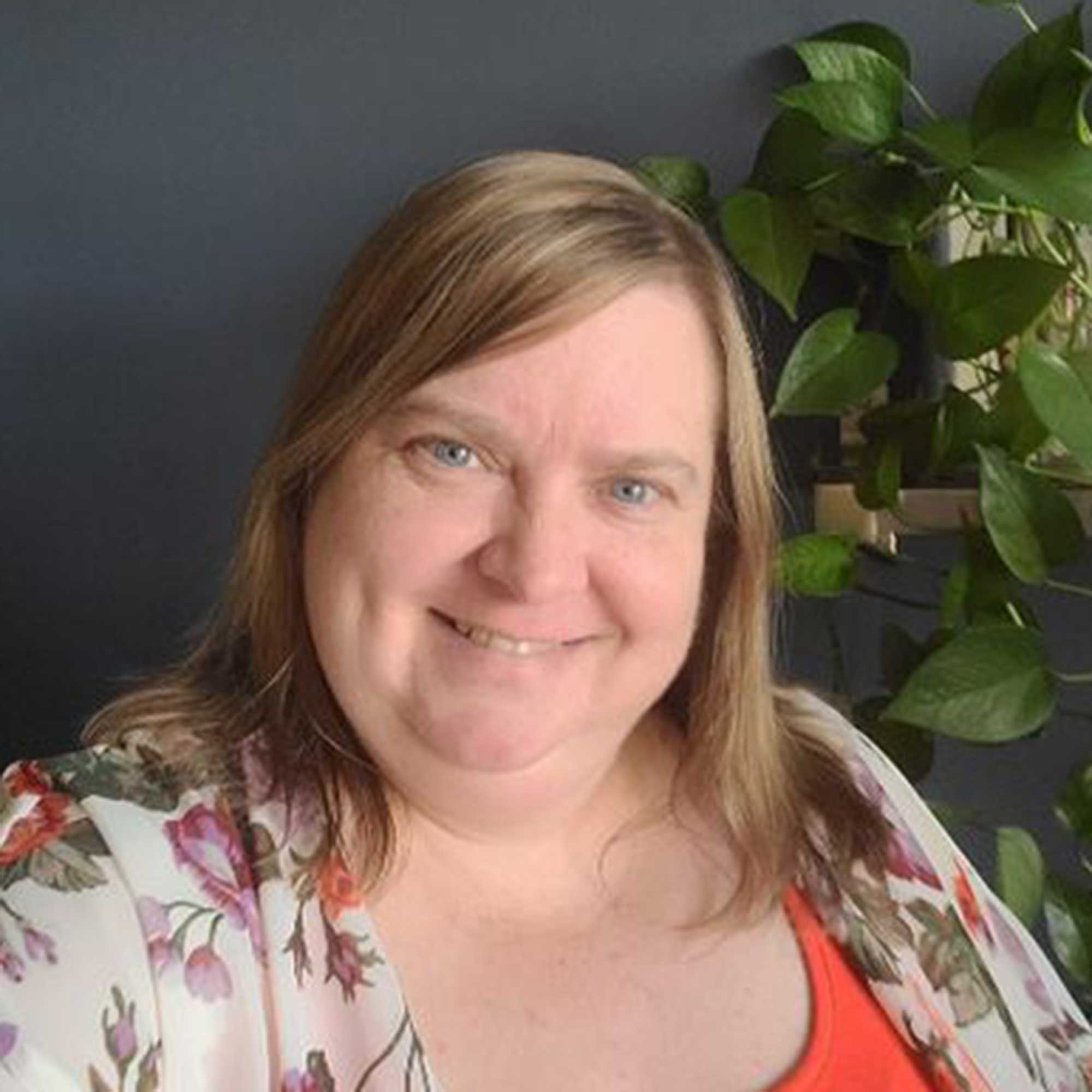
Operations Manager at Holland Group, managing the customer service department and purchasing. Katie has been in the green industry since 2005 in the Greater Milwaukee area, earning her degree in Horticulture in 2008. She has been able to share her love for plants working in multiple garden centers, in sales positions and most recently in an online retail platform at Holland Group.
Dead Man’s Fingers
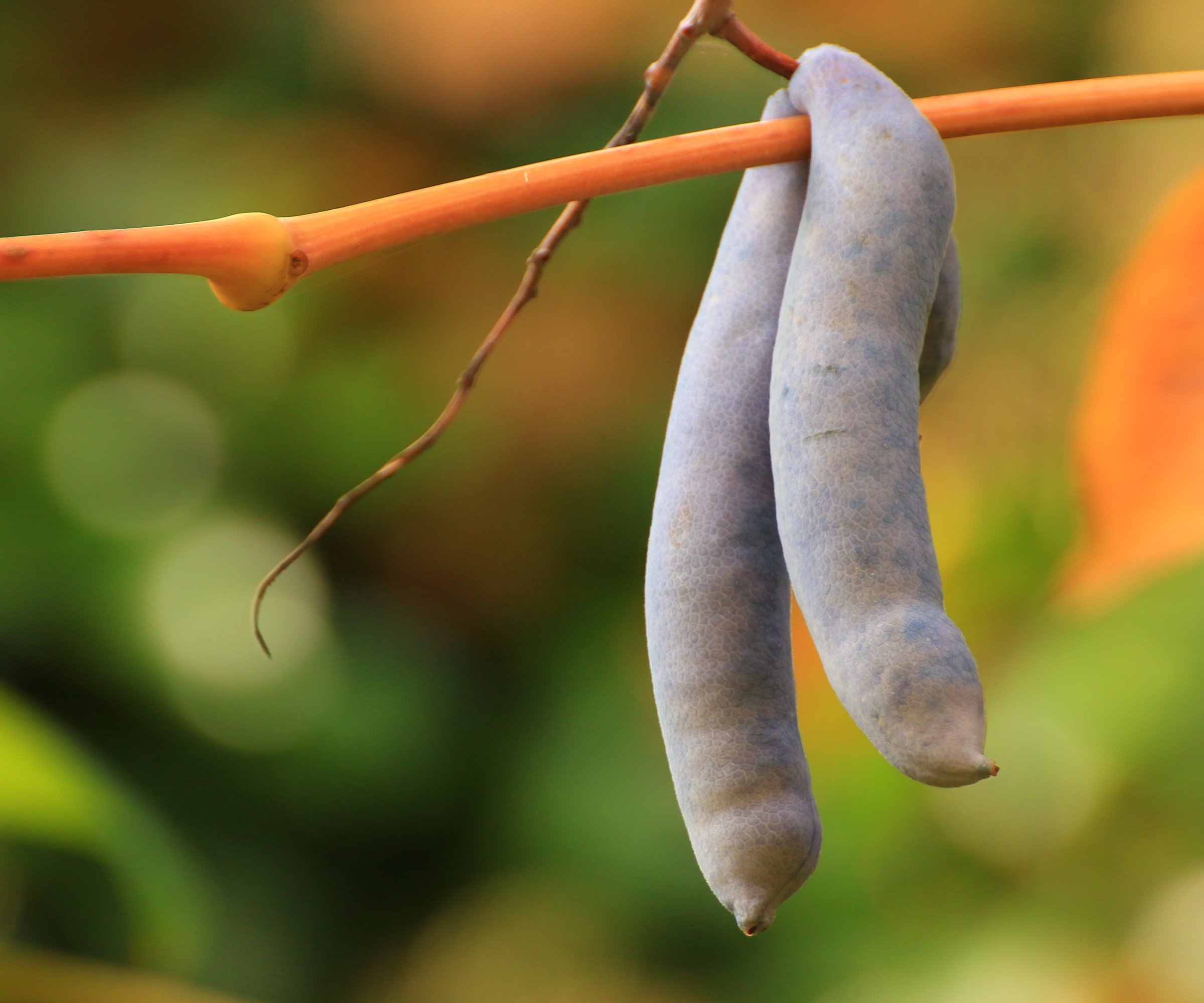
The elongated fruits of Decaisnea fargesii or the Blue Bean Shrub are definitely an eerie sight and a brilliant Halloween decoration. Hanging from the branches of this shrub, the knobbly pale blue pods look like giant fingers and are curiously filled with a clear, sticky jelly surrounding the large pea-like seeds.
Reaching a height and spread of 13-26ft (4-8m), this deciduous shrub needs plenty of space, preferably in a sheltered spot. Grow in partial shade or full sun with moist but well drained soil. Foliage is attractive appearing as a lime green tinged with blue in spring before maturing to a pure yellow in fall.
Sempervivum Cobweb
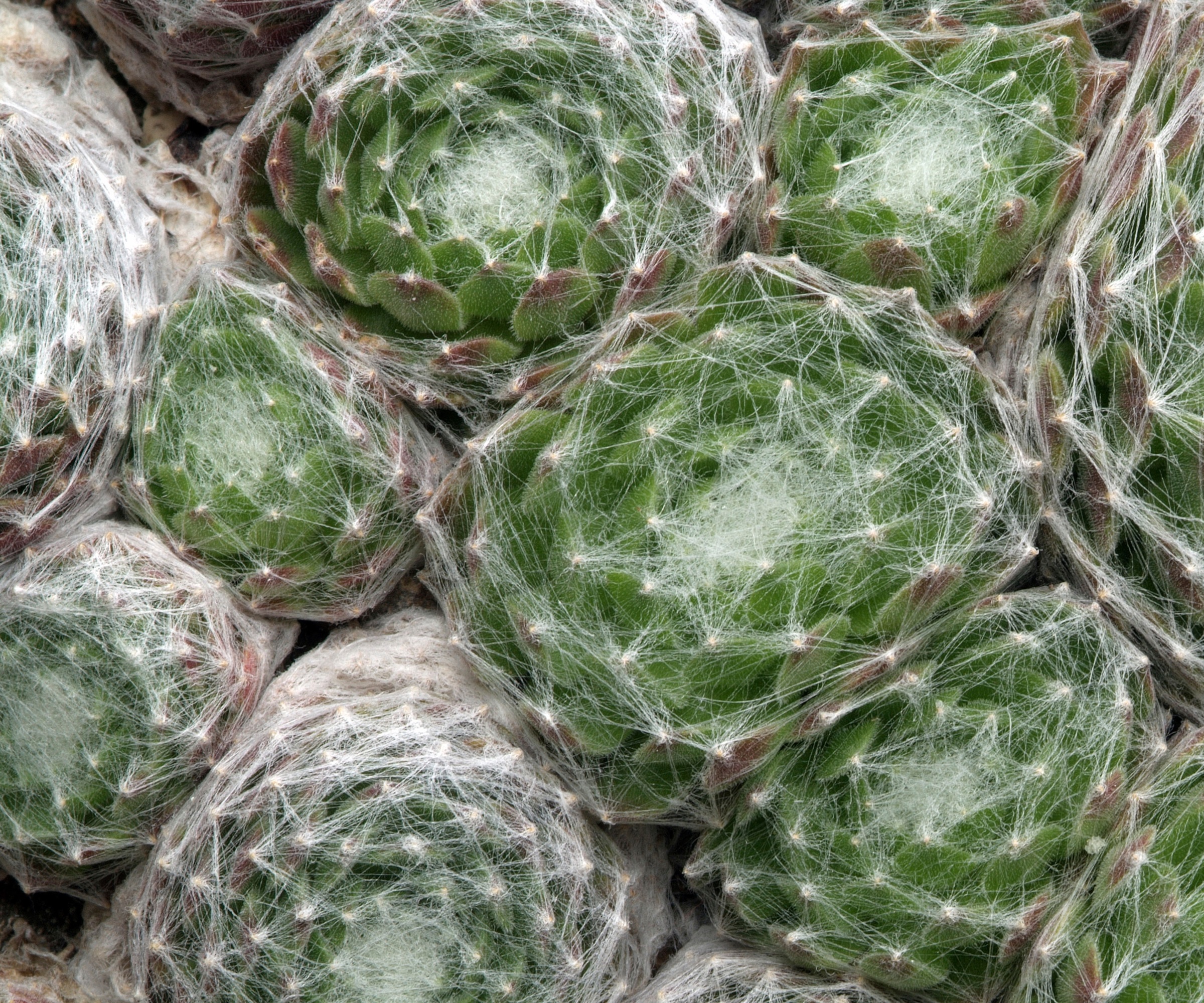
Here the name says it all; this tough beauty - Sempervivum arachnoideum – looks as though it’s been draped in an elaborate and sticky spider web. Tightly packed rosettes of fleshy green leaves, tinged with touches of rust red, cluster happily together in cracks and crevices of boulders and roof tiles. Covered in fine, white fibrous hairs, these form in the centre of each plant and gradually spread outwards.
Forming evergreen and perennial living carpets they can cope in exposed conditions, with poor, free draining soil in full sun. They do hate damp, humid conditions though, so they may be best suited to growing indoors in some areas.
One of the best plants for for a green roof, cobweb houseleeks will produce small starry pink flowers on 4-5in (12cm) stems during the summer. Check out Walmart's selection of sempervivum's here.
Sweet Betsy Trillium

Think Little Shop of Horrors - despite the cutesy name these trilliums are strange, triffid-like plants.
'Trillium, aka toadshade, is a native wildflower that blooms during the spring,' says bulb and perennial expert Megan Foster. 'A small deep burgundy flower blooms from the center of the three main leaves. Leaf patterns vary, but include shades of forest green, light green, and silver that together resemble the coloring of a toad’s skin - hence the common name.'
A clump-forming perennial, these shade loving plants are happiest in woodland gardens or naturalized in a wildflower meadow or orchard. Flowering in mid to late spring, they are easy to grow and reach a height of 12-18 inches (30-45cm) and 12 in (30cm) wide. Left undisturbed their rhizomes will gradually spread and form a living carpet.
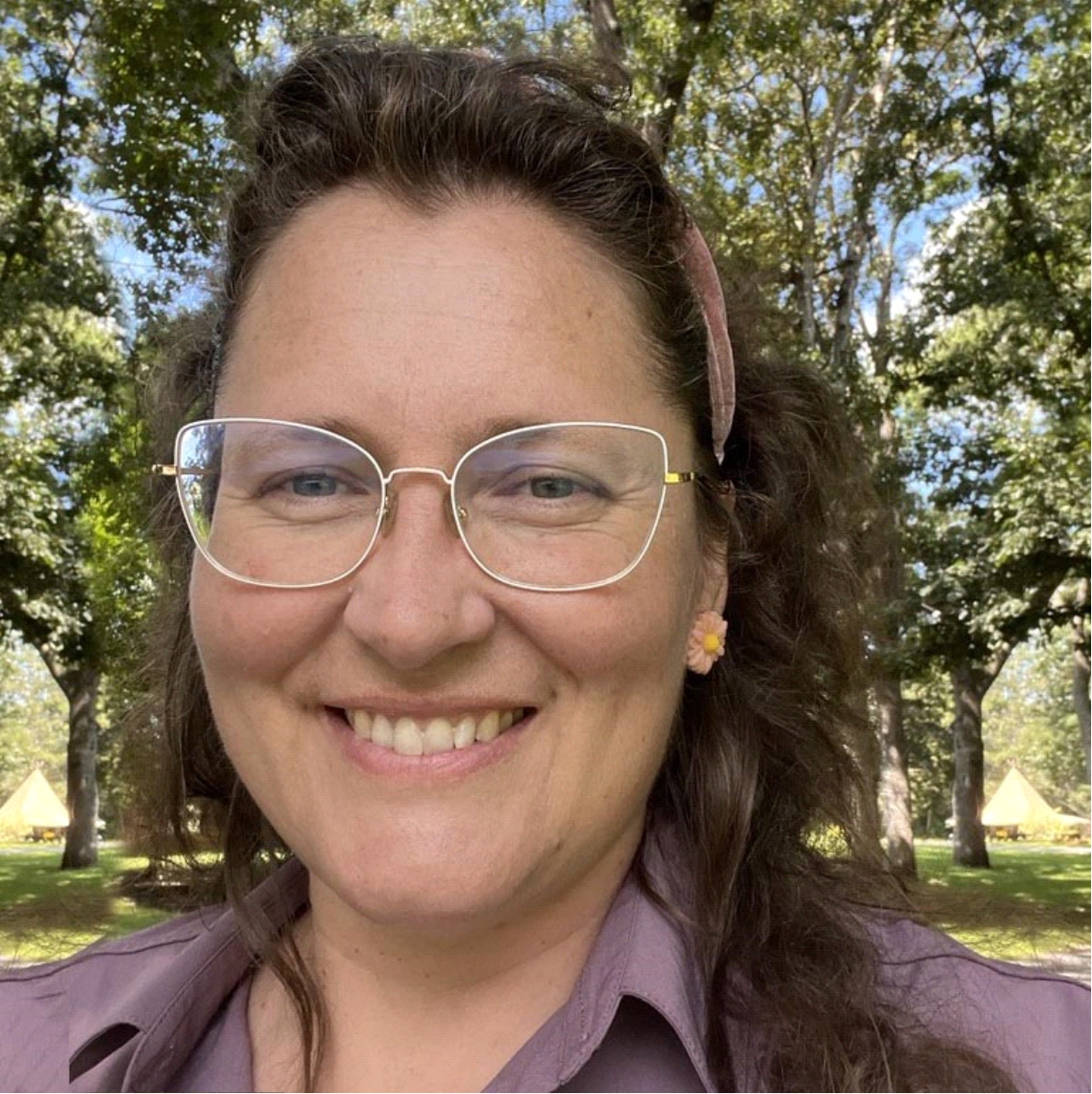
Megan is the category manager overseeing perennials and bulbs for American Meadows since 2019. With a keen eye for color and passion for pollinators, she curates pre-planned gardens for the brand. Her instinct for what gardeners want also drives the spring and fall bulb assortments. She gardens in zone 5 in Vermont.
Old Man Cactus

Nicknamed 'Old Man Cactus' because it’s covered in long white hairs like a grandfather’s beard, the hairy appearance of Espostoa melanostele also gives it a ghostly look,’ explains horticulturist Justin Hancock. ‘It is a slow-growing species with a vertical form, making it ideal for bright desks, tabletops, and windowsills. And, like other desert-dwelling cacti, it has low water needs.’
Don’t be fooled though, with this plants soft and cuddly looks. Beneath the fine white hairs lie rings of needle-sharp spines. Avoid overwatering as this will rot the stem and roots. Also be sure to keep the temperature above 54F (12C) if the plant is to thrive.
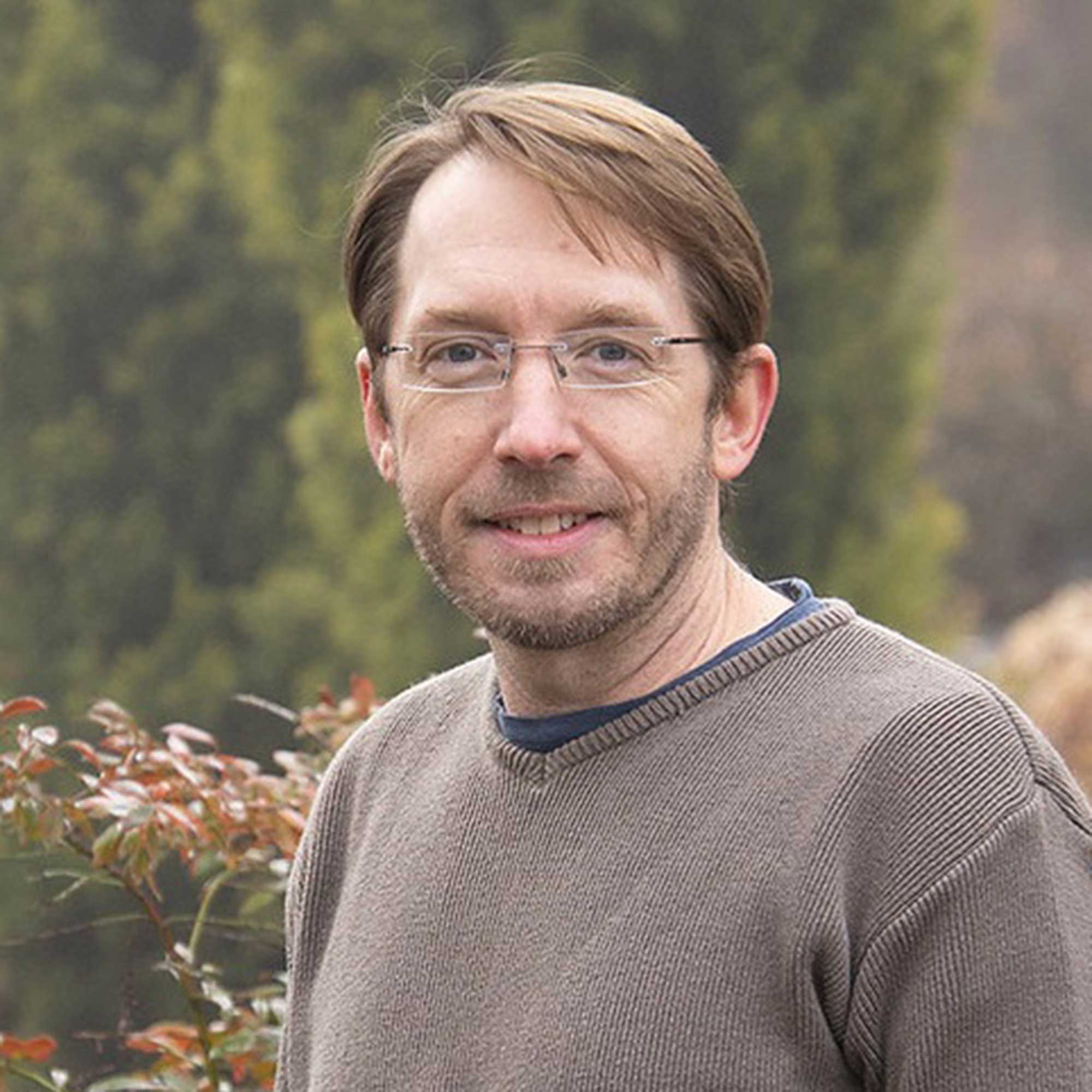
Justin Hancock, is a Costa Farms horticulturist with more than 25 years in the industry. A plant enthusiast and educator, he has a degree in horticultural science and has worked in garden centers and botanical gardens, as a garden designer, and in garden publishing. He has experiencing gardening across the country, from Minnesota to Miami to Oregon. Hancock is also co-host of the Costa Farms podcast Plant Rx.
Toad Plant
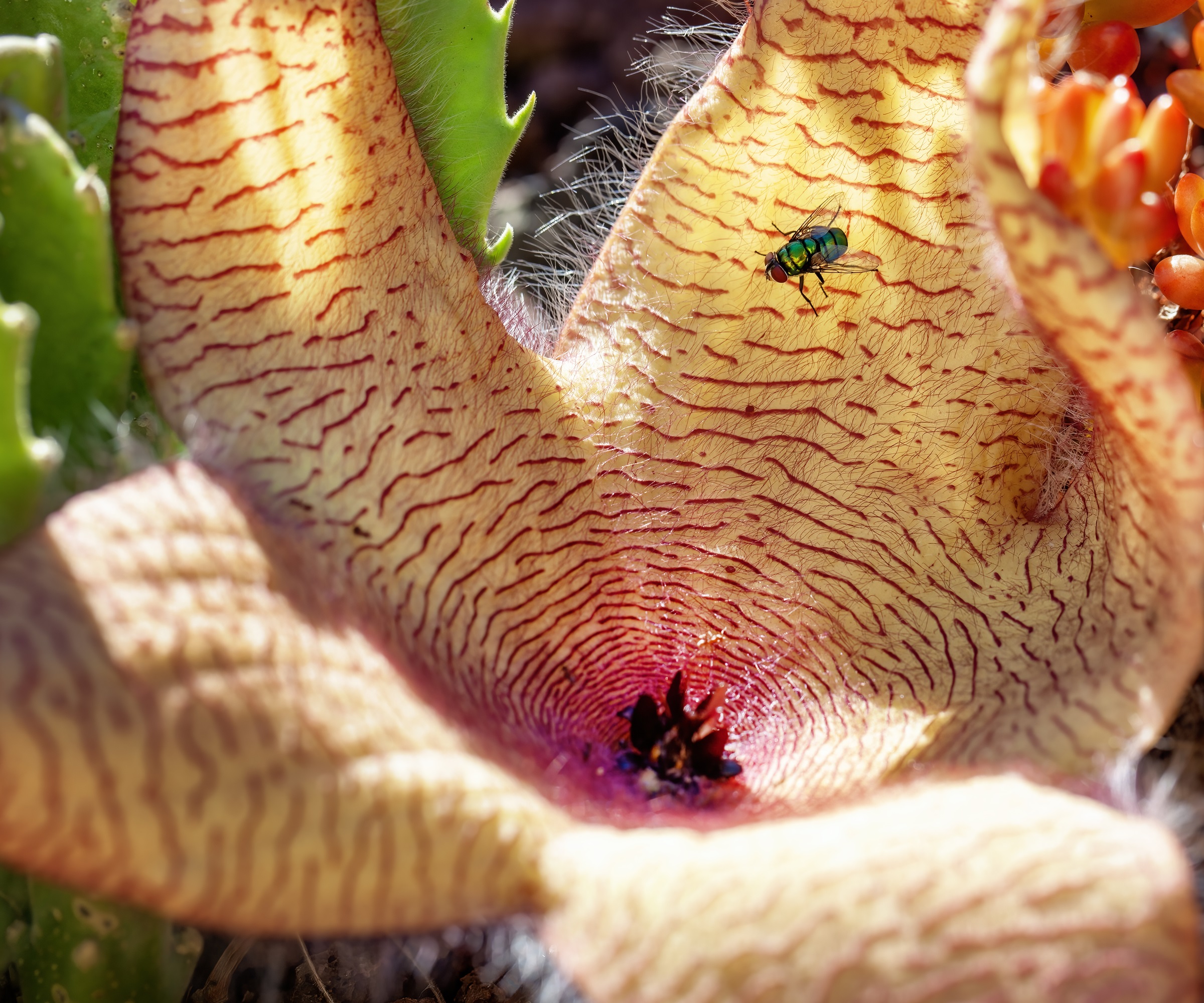
A succulent evergreen perennial, the flowers of the toad plant are definitely the stuff of nightmares. Creepy looking with five tongue-like petals that look as though they could swallow you whole, they are a must for any All Hallows’ Eve display.
‘Toad plant or Stapelia gigantea, is creepy looking and rather smelly, making it a great addition to a spooky looking indoor garden,’ says Katie. ‘It’s a succulent with large, star-shaped blooms that smell really bad when they open. The blooms are pale yellow with purple irregular stripes throughout, while the foliage is long, slim with upward facing spines up and down the length of each leaf.’
Pitcher Plant
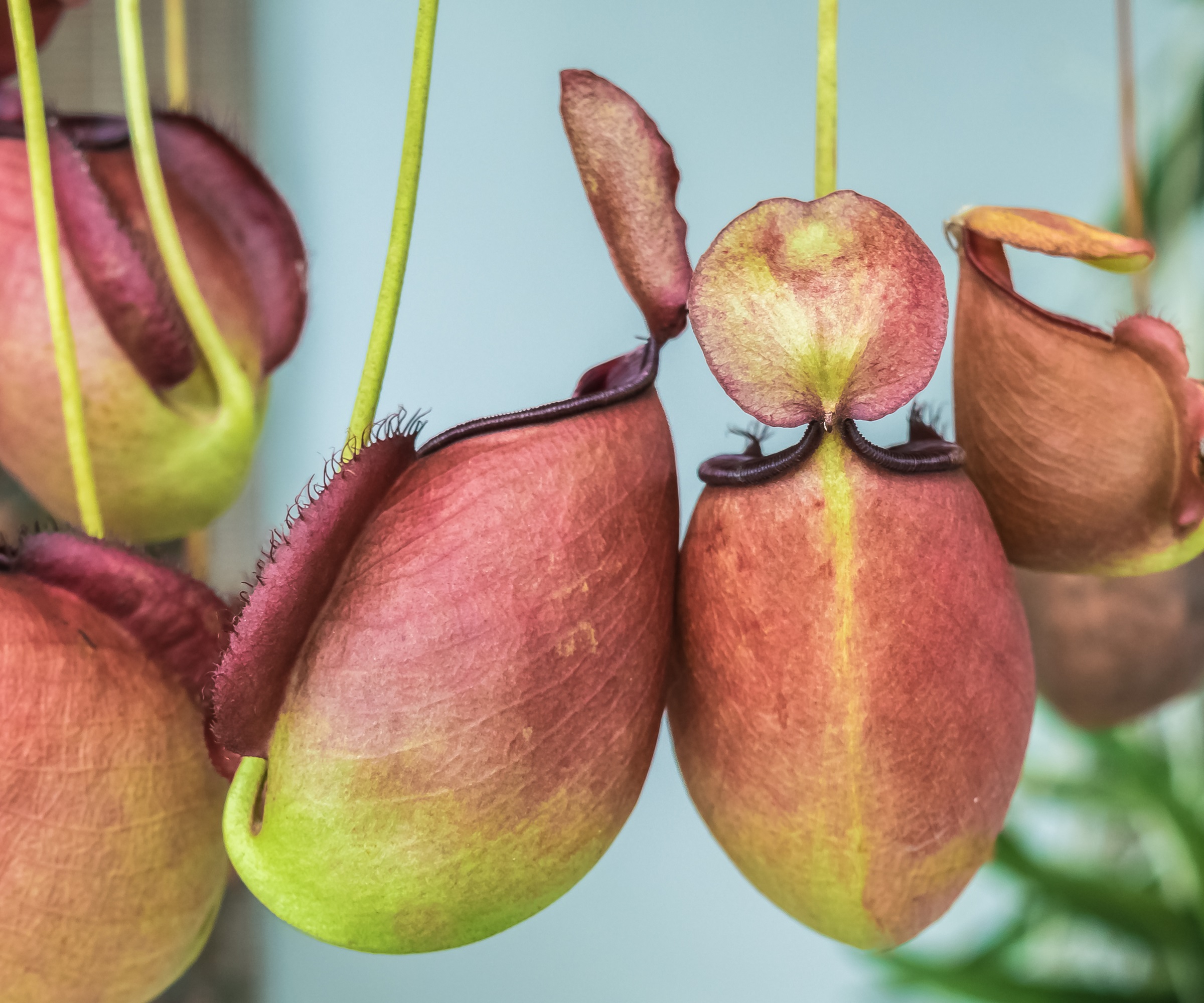
Nepenthes Pitcher Plant
It’s not just the peculiar looks of a pitcher plant that fascinate, but its gravity defying and carnivorous tendencies too. An epiphytic plant, Nepenthes or the tropical pitcher plant hangs in the air clinging to other surfaces and plants for support. With numerous curvy red, yellow-green pitchers dangling from the foliage, attached only by the slenderest of tendrils, it is a real head turner, but also death trap for insects.
Luring insects to feed on the nectar within the bulbous pitcher, the creatures are unable to crawl out again. Instead they drown in the liquid and are digested by the plant’s enzymes.
While all pitcher plants prefer warm, humid and bright conditions, particularly varieties can cope with different temperatures depending on whether they are highland or lowland species. They can take 5 to 10 years to reach maturity but will produce pitchers throughout the year.
Red Cockscomb

Irresistibly creepy, the contorted, red and velvety flowers of Celosia cristata bear a striking resemblance to brains. Grown as an annual, perennial or indoor plant depending on your climate, this easy to grow favorite is a brilliant choice for DIY Halloween displays. Retaining its vivid color, even once cut, it can be added to wreaths and garlands for touch-me-if-you-dare details.
Grow in full sun, in moist but well-draining soil. Cockscomb will survive as a perennial in USDA zones 9-11.
Sarracenia
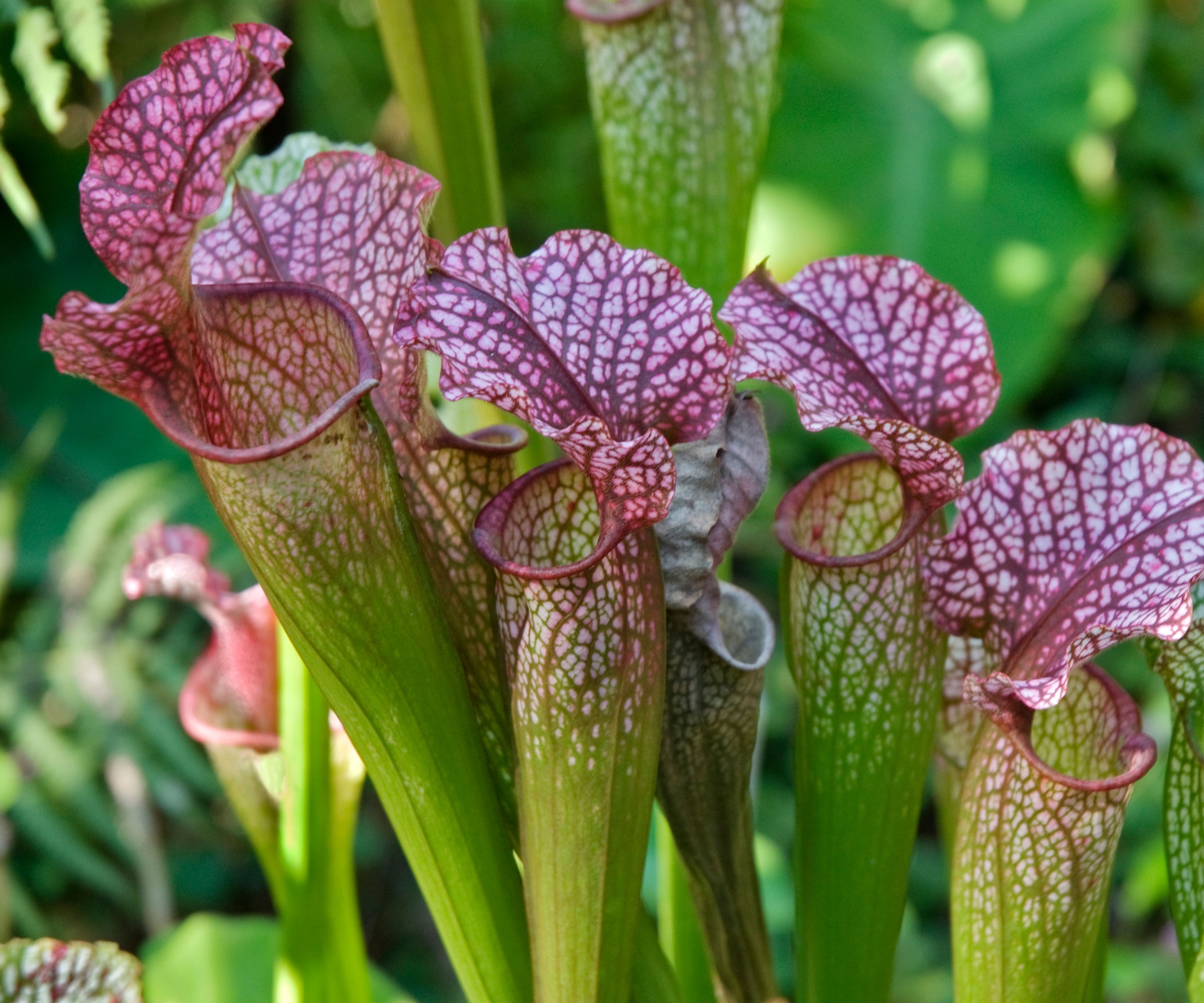
Tall, veiny and tongue-like, it’s easy to see why these carnivorous plants give many people the heebie-jeebies. This variety, with its dramatic green cones turning deep crimson at the rim, grow up to 1'-3' (30cm-90cm) and are one of the showiest pitcher plants.
‘Sarracenia can be grown outdoors in very warm climates or in a shady location during the summer months in cooler climates but is generally marketed as an indoor houseplant,’ says Katie. ‘Pitcher plants are perfect as a spooky plant as it is carnivorous, trapping prey, usually insects, in large cupped leaves that contain digestive fluid. Pitcher plants refer higher humidity and warm temperatures. They do best indoors in a bright, indirect light.’
Venus Flytrap
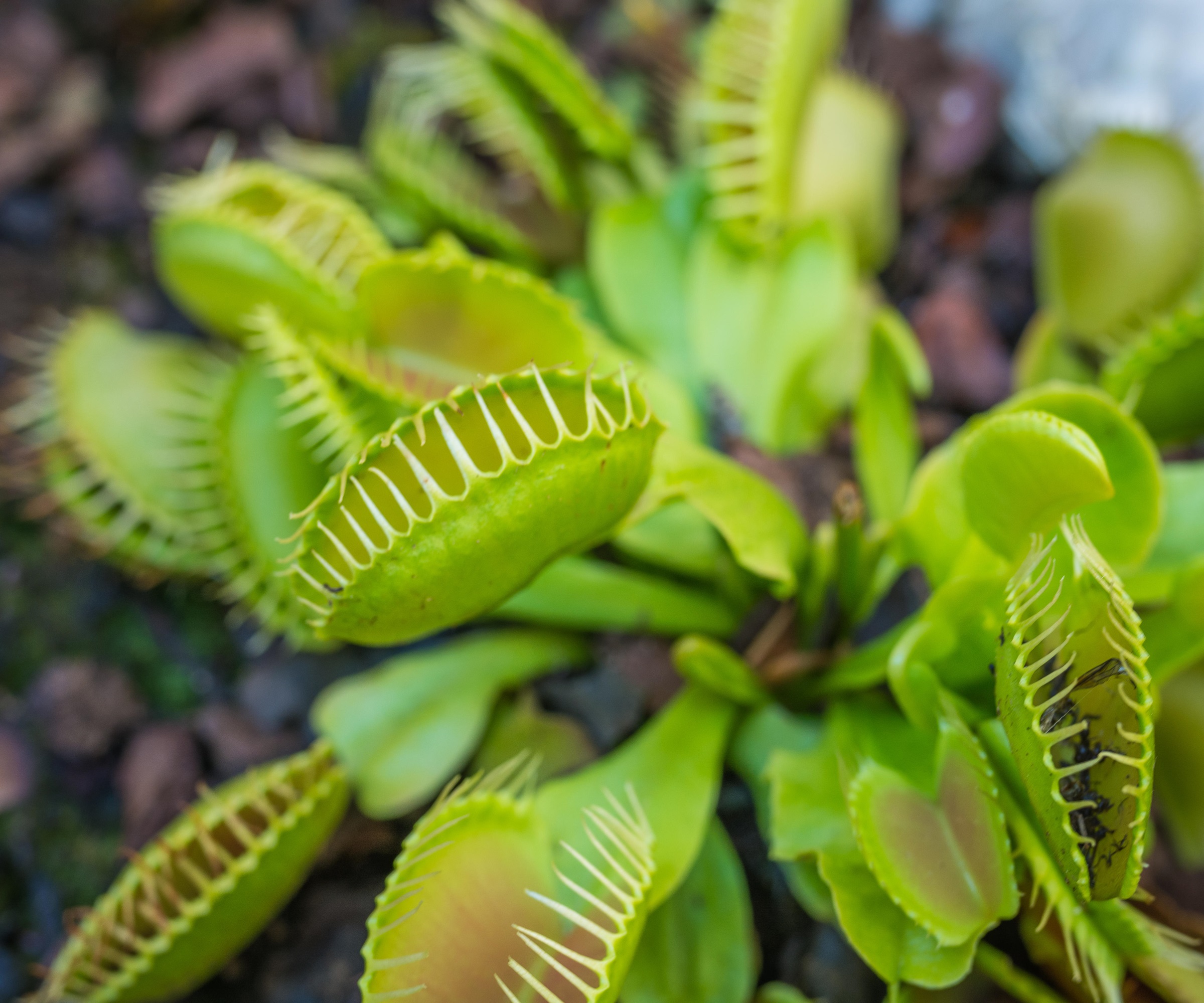
With it’s many snapping mouths, Dionaea muscipula or the Venus Flytrap is an endless source of morbid fascination. Luring flies and other insects into its hinged and modified leaves, fringed with teeth, they are slowly digested to provide the plant with essential nutrients. Taking up to 10 days to process, the trap will reopen ready to begin feeding all over again.
Growing naturally in bogs, these acid loving plants are happy in sun and part shade. They can be grown outside in USDA zones 5-8 and can reach heights of up to 6-12 inches (15-30cm).
Thread-leaved sundew
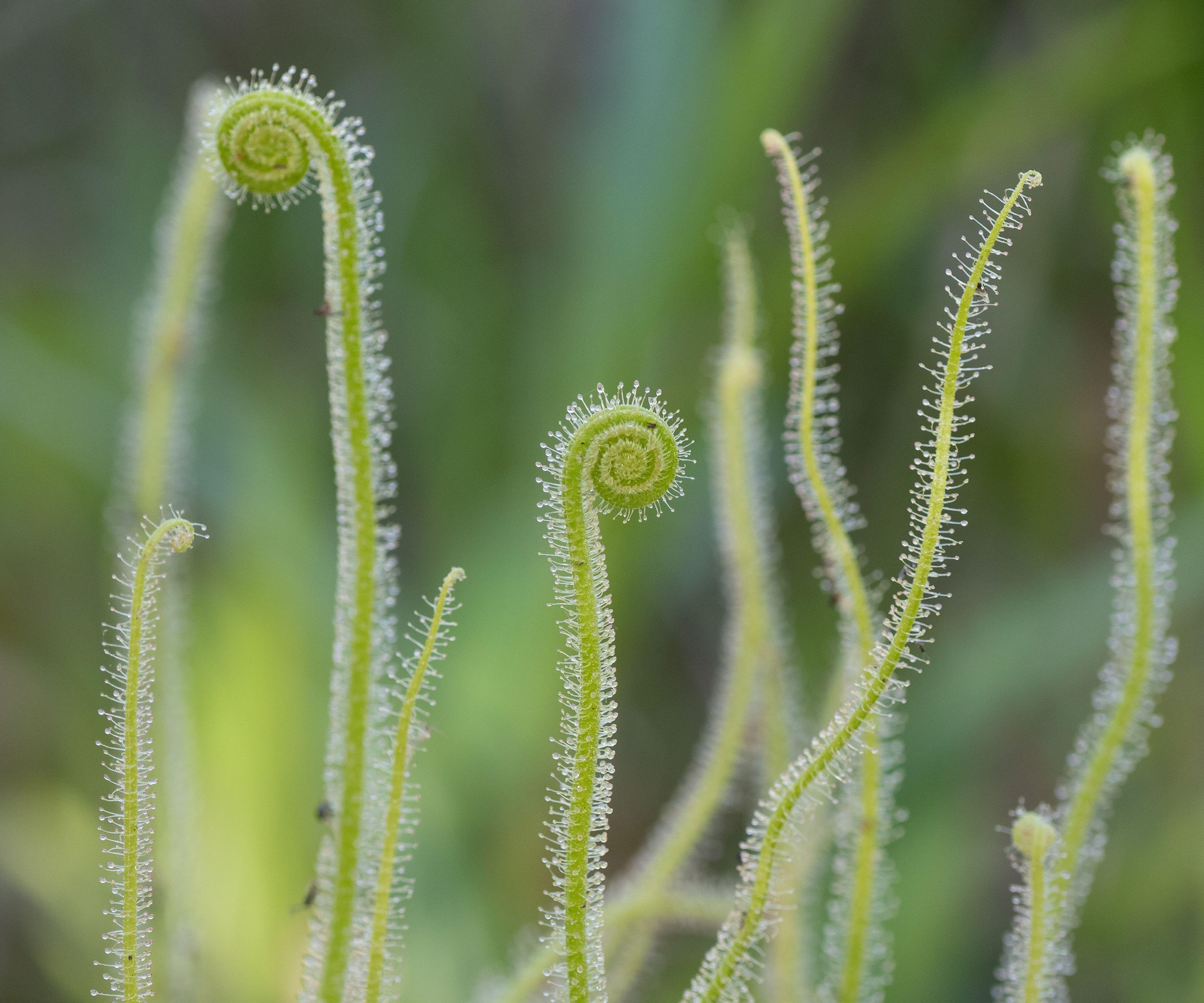
With its sinewy, upright leaves covered in sticky hairs, Drosera tracyi or thread-leaved sundew is a curious sight. A carnivorous bog plant, it thrives on trapping insects by curling its tentacle-like around their bodies before digesting them.
It can be grown in containers if conditions are right. These include good humidity, temperatures from 70-75F (21-23C) and high light levels. A tropical perennial, this plant can reach up to 8-10in (20-25cm) tall.
Whether you're drawn to the rich purples and blacks of sinister-looking flowers, or fascinated by the haunting presence of twisted branches and insect-eating foliage, spooky plants can transform any space into an otherworldly landscape. If you fancy more weird and wonderful plants to grow, then check out these fascinating carnivorous plants, curious lithops - or living stones - and the crazy habits of air plants.
Sign up to the Homes & Gardens newsletter
Design expertise in your inbox – from inspiring decorating ideas and beautiful celebrity homes to practical gardening advice and shopping round-ups.

Journalist Jill Morgan has spent over 20 years writing and editing gardening, interior and property features. Titles she has worked on include The English Home, House Beautiful, Ideal Home, Houzz and Modern Gardens and she writes regularly for H&G as a Contributing Editor. Whilst she is a dab hand at renovation projects and DIY, she is happiest when out digging in the garden or planning a new border.
-
 How to grow Virginia creeper – it may divide opinion, but this fast-growing, shade-tolerant vine will cover walls and fences in record time
How to grow Virginia creeper – it may divide opinion, but this fast-growing, shade-tolerant vine will cover walls and fences in record timeIf you are looking for spectacular fall color, Virginia creeper is the climbing plant to grow
By Thomas Rutter
-
 Step up your pool cleaning routine with Beatbot AquaSense 2 Ultra
Step up your pool cleaning routine with Beatbot AquaSense 2 UltraCelebrate National Pool Opening Day by saving up to $618 on a luxurious pool cleaning solution from Beatbot.
By Sponsored